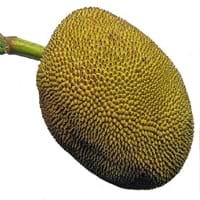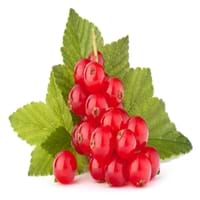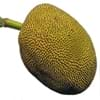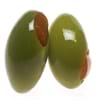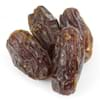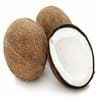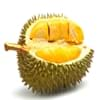Health Benefits
Cancer prevention, Heart care, Prevents constipation, Regulation of heart rate, Treatment of colonic diseases
Cancer prevention, Gout treatment, Heart care, Regulation of heart rate, Treatment of rheumatism
General Benefits
Controls blood pressure, Cures cough, Digestive aid, Flu treatment, Improves eye vision, Treatment of common cold
Anti oxidant properties, Controls blood pressure, Cures fever, Digestive aid, Healing of wounds, Helps in weight loss, Strengthens bones
Skin Benefits
Brightens and lightens complexion, Reduces wrinkles
Brightens and lightens complexion, Reduces wrinkles, Treatment of acne
Hair Benefits
Promotes longer and healthier hair, Regulates hair growth
Protects hair
Allergy Symptoms
Abdominal cramps, Diarrhea, Skin Rashes, Swelling of mouth, tongue or lips, Vomiting
Abnormally rapid heart rate, Anaphylaxis, Breathing difficulty, Hives, Itching, Swallowing difficulties
Side Effects
Allergic reaction, Coagulation
Possibly unsafe during pregnancy
Pregnant Women
Not Available
Yes
Best Time to Eat
Along with meal, As a snack in the late afternoon, Don't consume at night and before bed, Eat the fresh ones, avoid mixing with any other foods, don't eat after meal., Morning time (before lunch)
Best if taken as a breakfast (or empty stomach), As a snack in the late afternoon, Don't eat after meal, Morning time (before lunch)
Vitamin B5 (Pantothenic Acid)
Vitamin C (Ascorbic Acid)
Vitamin K (Phyllochinone)
Not Available
Calories in Fresh Fruit with Peel
Not Available
Calories in Fresh Fruit without Peel
Not Available
Calories in Frozen Form
Not Available
Calories in Canned Form
Not Available
Type
Tree fruit, Tropical
Berry
Season
Autumn, Monsoon, Summer
Summer
Varieties
Black Gold, Cheena, Cochin, Dang Rasimi, Golden Nugget and Golden Pillow
Rovada, Stanza, Red Lake, Junifer and Jonkheer van Tets
Color
Dark green, Golden yellow, Green, Indigo, Magenta, Yellowish-orange
Red
Soil Type
Clay loam, Porous, Sandy, Well-drained
Moist, Well-drained
Climatic Conditions
Humid, Warm
Cold
Facts about
- There are up to 500 seeds in Jackfruit & these seeds are edible.
- Root extracts of Jackfruit tree is used to treat diarrhea, fever and asthma.
- The taste of jackfruit is combination of mango, banana, melon and papaya.
- The albino version of red currants known as white currants, are often sold as different fruit.
- Red currant tea is healthy substitute for coffee.
- There are more than 150 varieties of red currants.
Top Producer
India
Russia
Other Countries
Bangladesh, Indonesia, Nepal, Thailand
Belgium, France, Germany, Ireland, Italy, Netherlands, Poland, Portugal, Scotland, Spain, Sweden, United Kingdom
Top Importer
United States of America
Germany
Top Exporter
India
Russia
Botanical Name
Artocarpus heterophyllus
Ribes rubrum
Synonym
Artocarpus heterophylla or Artocarpus integra or Artocarpus integrifolia
Not Available
Subkingdom
Tracheobionta
Tracheobionta
Division
Magnoliophyta
Magnoliophyta
Class
Magnoliopsida
Magnoliopsida
Subclass
Alismidae
Rosidae
Order
Rosales
Saxifragales
Family
Moraceae
Grossulariaceae
Species
A. heterophyllus
R. rubrum
Generic Group
Not Available
Saxifrage
Difference Between Jackfruit and Red Currant
We might think that Jackfruit and Red Currant are similar with respect to nutritional value and health benefits. But the nutrient content of both fruits is different. Jackfruit and Red Currant Facts such as their taste, shape, color, and size are also distinct. The difference between Jackfruit and Red Currant is explained here.
The amount of calories in 100 gm of fresh Jackfruit and Red Currant with peel is Not Available and 56.00 kcal and the amount of calories without peel is 95.00 kcal and Not Available respectively. Thus, Jackfruit and Red Currant belong to High Calorie Fruits and Low Calorie Fruits category.These fruits might or might not differ with respect to their scientific classification. The order of Jackfruit and Red Currant is Rosales and Saxifragales respectively. Jackfruit belongs to Moraceae family and Red Currant belongs to Grossulariaceae family. Jackfruit belongs to Artocarpus genus of A. heterophyllus species and Red Currant belongs to Ribes genus of R. rubrum species. Beings plants, both fruits belong to Plantae Kingdom.
